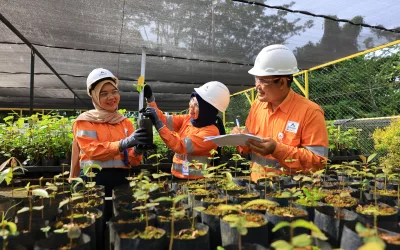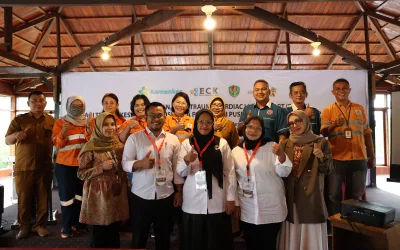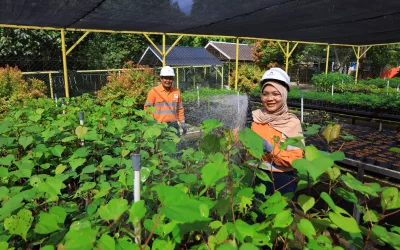An ecosystem is a geographic area where plants, animals and other organisms, as well as the weather and natural landscapes, work together to form the cycle of life. Every element in an ecosystem, no matter how small, depends on other elements, either directly or indirectly. For example, changes in temperature in an ecosystem will affect the survival of the plants that grow there. Thus, animals that depend on these plants for food and shelter must adapt by moving to other ecosystems or perishing.
Human activities and environmental disturbance may disrupt the balance of ecosystems, such as wildfires, landslides, water and air pollution, and wild animal hunting. If conservation is not immediately carried out, this imbalance can have an impact on all living things, especially humans, namely the new generation in the future who will inherit this nature.
Ecosystem conservation can be carried out in many ways, one of which is by doing plant enrichment, which is a tree-planting activity as a part of forest and land rehabilitation efforts. By increasing plant diversity and making optimal use of tree growth space, these new plants are expected to increase biodiversity and ecosystem functions. However, choose the plants wisely.
Compared to alien plant species, of course, it would be much better and more optimal to use native plant species. Native plant species are plants that have grown in a particular habitat or geographic area for thousands of years or more. That means these plants are more adaptive to climate, light, and soil conditions in the ecosystem. Thus, these plants are more likely to reproduce and become a good source of food and shelter for the animals in the ecosystem.
To speed up and reduce costs, planting these native species can be done using the seed ball method. A seed ball is a small ball with a diameter of 20 -30 cm, which is a mix of top soil, compost fertilizer, and plant seeds. The seeds of these plants are wrapped in such a way as to protect them from predators and extreme environmental conditions, as well as to provide initial nutrition to the seeds after germination.
These seed balls will later be thrown into natural forest areas or reclamation areas, especially to enrich local plants and ecosystem restoration. Seed ball dispersal is intended to grow by itself with minimal human intervention. Apart from being thrown directly, seed balls can also be dropped using the help of a helicopter. This method is commonly called aero seedling.
This method adheres to Natural Farming, a more extreme farming method than organic farming. If organic farming only emphasizes not using chemicals in the food sources processing, natural farming focuses on cultivating the land without having to plow it (reversing it) because they believe that reversing it will actually damage the soil structure that has been well-ordered by nature.
Plants are grown according to natural and climatic conditions. There is no manipulation of anything that goes against the principles of nature. Live in harmony with the forces of nature. In this method, it is also advised not to bury the balls in the soil or water them. Just let the plant grow by itself and natural selection will make it a good plant, i.e. the strong plants will be able to grow big, while the weak ones will die. Thus, later we will get only high quality plants.
Making a seed ball is also not difficult. We only need top soil, compost, the plant’s seed, and water, and can be added with insecticides or pesticides to prevent seed balls from being attacked by pests. After all the ingredients are collected, mix them and then form them into marble-sized balls. Then, just dry it in a place that is not exposed to the sun. PT Agincourt Resources (PTAR), as the operator of the Martabe Gold Mine, has also implemented the seed ball technique for natural forest restoration activities and plant enrichment in the reclamation area, especially in areas with open land cover. This method is carried out as one of the PTAR reclamation efforts and a form of commitment to environmental sustainability. In addition to rehabilitating ex-mining areas, PTAR also rehabilitates natural forest land to enrich biodiversity and protect ecosystems.







